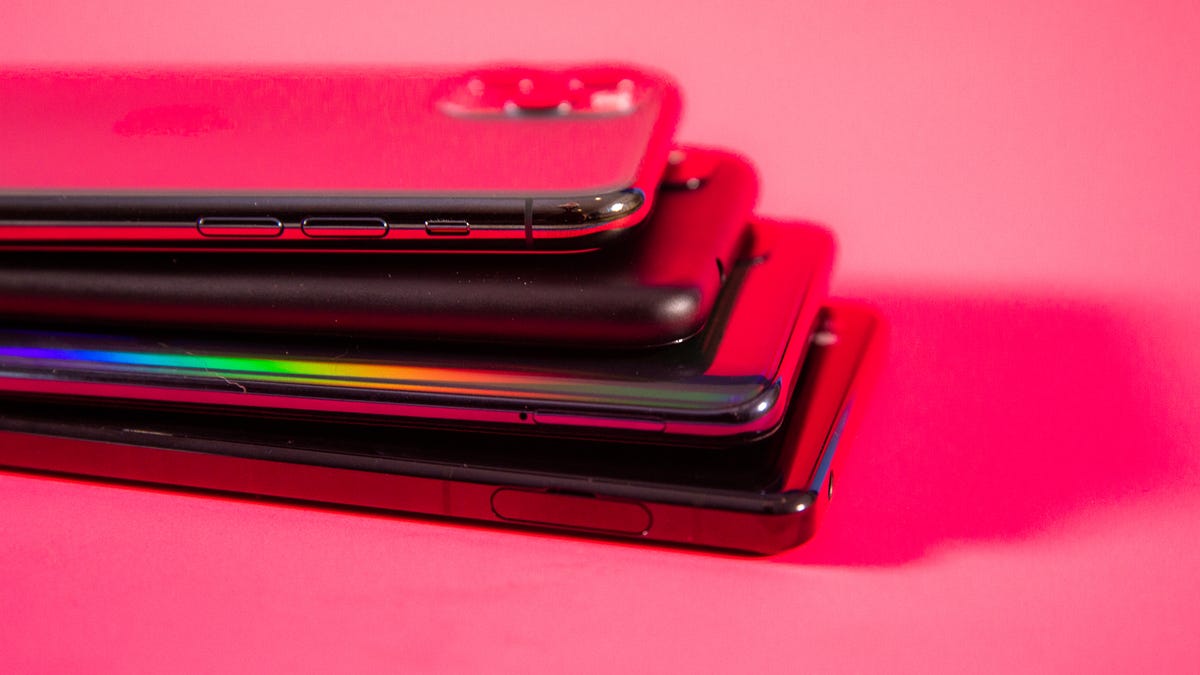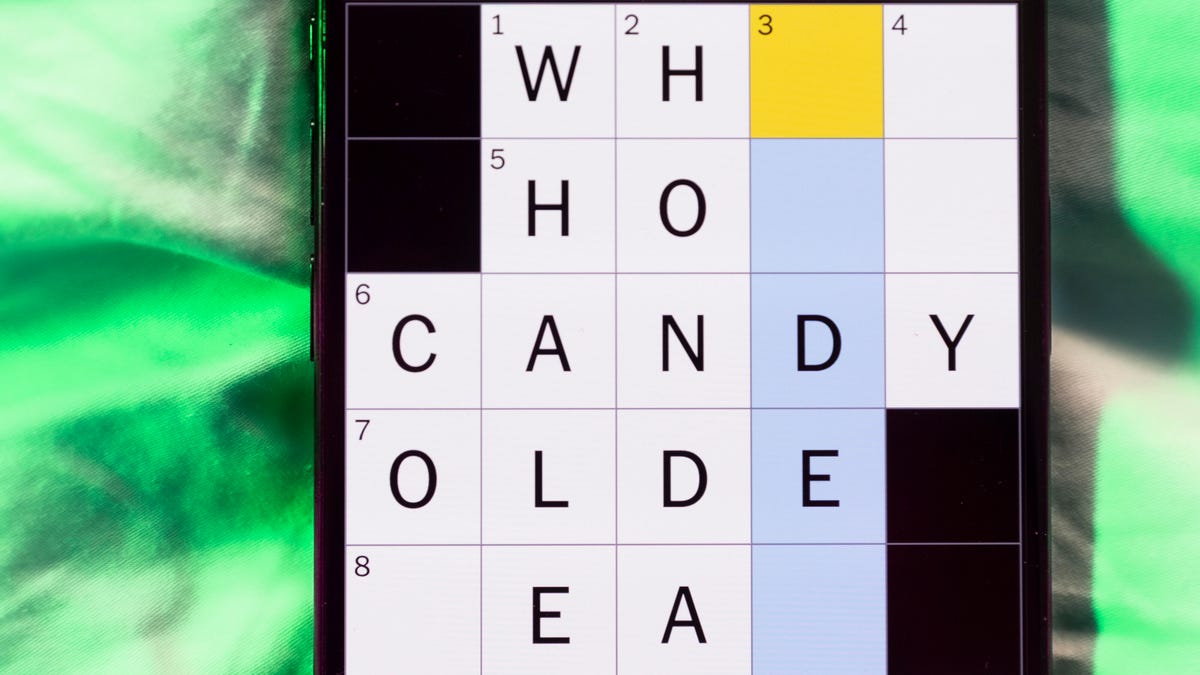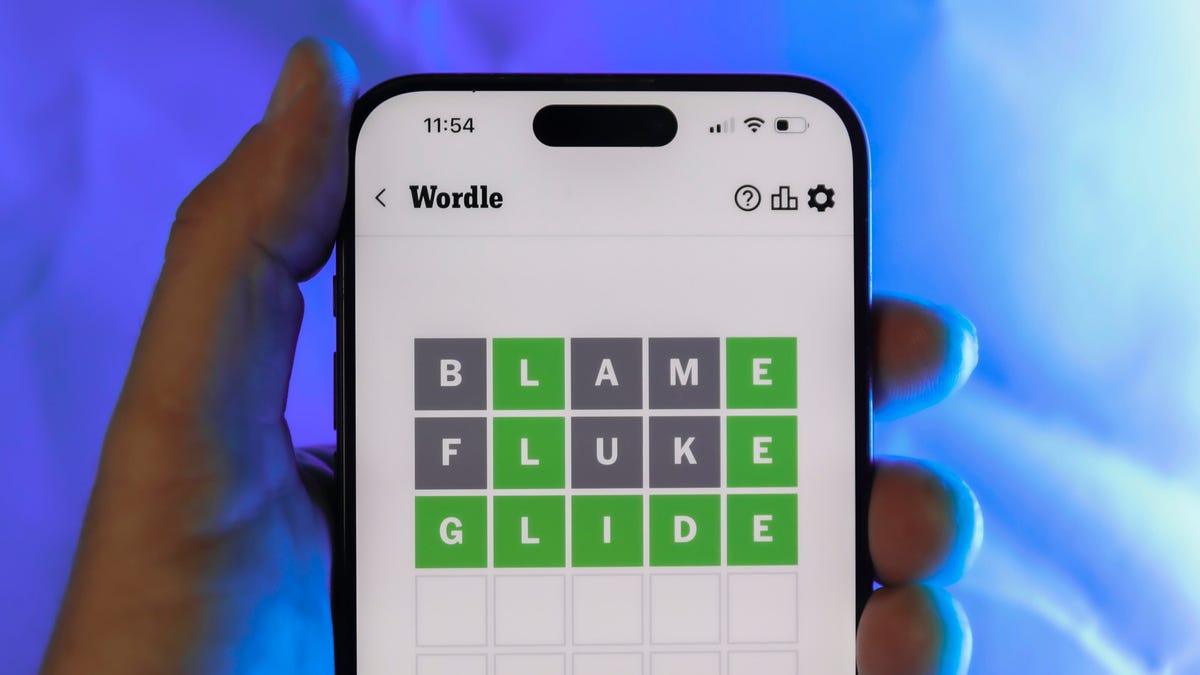Technologies
Don’t Throw Away Your Old Devices and Gadgets. How to Recycle Them for Free
Upgraded to a new device? Here’s what to do with your old one.

New phones, tablets, laptops come out every year. You upgrade your tech, and your old device is retired to your in-home gadget graveyard. You probably have a drawer full of old batteries and cables, and some old phones, laptops and desktops lying around, depending on how frequently you upgrade your gear.
We all hang onto outdated tech for our own reasons — I still have my first Nokia block phone tucked away for nostalgia’s sake. There are also multiple ways to repurpose old devices for your smart home, using them as security cameras and more.
Whatever the tech, when it’s finally time to say goodbye, there’s a right way to dispose of your old gadgets — and there are a lot of wrong ways. We’ll show you which is which.
What to do before you get rid of a device
When you’re finished with a gadget, make sure it’s also finished with you. Make sure to back up anything you want off the device — photos, videos, songs — and then perform a factory reset. Here are a few CNET articles to help clarify the finer points of wiping a device:
- How to Wipe Your Phone or Tablet Before You Sell It
- The Best Way to Completely Wipe Your Android Device
- What to Do With Your iPhone or Android Phone Before Donating It
- How to Reset and Clean My Laptop to Give to Someone Else?
Here are the best places here in the US to recycle, repurpose or give new life to your old technology.
Smartphone Recycling
Smartphone Recycling lets you print a free FedEx shipping label or request a recycling kit. Ship your old smartphone and you might even get paid, depending on the device’s condition and age. Smartphone Recycling accepts devices in bulk, so you have to ship a minimum of 10. Depending on how long you’ve been hoarding phones, you might meet this quota on your own. If not, check with friends and family and make it a group effort.
What you can recycle: Smartphone Recycling accepts smartphones, cell phones, MacBooks, tablets, iPhones, iPads, iPods and Apple Watches, as well as batteries attached or installed in devices.
Best Buy
Best Buy accepts a wide range of tech products and generally takes three items per house per day. Specifics may vary depending on where you live, but you can check with the state-specific recycling information dropdown menu on the site.
Best Buy also offers a haul-away option for larger appliances like TVs, dishwashers, freezers, microwaves, treadmills and exercise bikes. If you’ve ordered a new product, Best Buy will take away your old one for recycling. There’s also a stand-alone haul-away option that costs $200. You can have two large items hauled away as well as an unlimited number of smaller items, with some exceptions.
What you can recycle: Best Buy can take TVs, cables and chargers, media players, projectors, laptops, hard drives, webcams, cellphones, calculators, radios, landlines, headsets, vacuums, fans, ink and toner cartridges, alarm clocks, speaker systems, e-readers, video game consoles, memory cards, camcorders, digital cameras, GPS devices and more.
Staples
Office supply store Staples also offers free recycling options for old technology. Staples accepts up to seven items per customer per day. The company also has various haul-away options, driver pickup and pallet pickup, as well as prepaid address labels available.
What you can recycle: Staples can recycle accessories, adapters, cables, computers, cordless and mobile phones, digital cameras, laptops, routers, tablets, webcams, ink and toner and other office tech items.
Home Depot
Home Depot has an explainer on its website about how to safely dispose of dead batteries, old paint, electronics and other items, as well as tips for upcycling and repurposing. According to RecycleStuff.org, the services are drop-off only for residential customers.
What you can recycle: According to RecycleStuff.org, Home Depot accepts household alkaline batteries (AA, AAA, C, D, 9V), lithium-ion batteries, nickel-cadmium batteries, rechargeable household batteries, cell phones and LED light bulbs.
US Environmental Protection Agency
The EPA doesn’t handle recycling and drop-offs the same way other businesses do, but it does have a handy guide that makes it easier to get the information you need. The EPA’s directory breaks down donation and recycling by electronic device, company name, logo and any additional details.
What you can recycle: Again, the EPA’s directory links you out to specific companies and their policies, but according to the list, you can recycle and donate mobile devices, PCs and TVs as well as imaging equipment and supplies.
Electronics Take-Back Coalition
Like the EPA, Electronics Take-Back Coalition makes it easy to find manufacturer take-back programs in the US. You can browse over 25 companies’ take-back program summaries, including Acer, Apple, Dell, HP, Lenovo, Panasonic, Sony and more.
The Electronics Take-back Coalition doesn’t handle the recycling, but it can direct you to the proper resource for your needs.
What you can recycle: Depending on the company, you can find places to turn in iPhones, iPads, smartphones, monitors, computers, printers, keyboards, mice, DVD and VHS players, cameras, TVs and more.
EcoATM
EcoATM gives you a price estimate for your old phone that you can lock in on the mobile app using your old device’s IMEI number. EcoATM will ask a few questions about your device like brand, model, memory, carrier and condition before generating a quote. From there, you can visit one of the organization’s kiosks, located at stores like Kroger, Walmart and Dollar General.
What you can recycle: EcoATM can help with iPhones, Samsung smartphones, tablets and MP3 players, Google Pixel phones, LG phones and tablets, Motorola phones and ZTE phones. You can also recycle chargers and cellular accessories like cases, but you won’t be paid for them.
Earth911
Earth911 lets you search by device and ZIP code to find appropriate nearby locations to turn in old phones. When you visit the organization’s website, click Where to Recycle at the top of the page to get started. Earth911 works with well-known businesses like Lowe’s and Target, as well as local waste and recycling centers.
What you can recycle: Earth911 helps you find locations to recycle, but it will also note the materials the location accepts, whether it allows drop-off or pickup for residential or businesses, as well as any additional information.
Recycling for Charities
Recycling for Charities accepts technology donations, but gives a percentage of the device’s value to the charity of your choosing. Scroll through a directory of charities, select one, enter the required information and click donate. Charities receive anywhere between 25 cents and $100 from your items.
What you can recycle: Wireless cell phones and corresponding batteries, iPhones, wireless pagers, digital cameras, iPods, PDAs and Palm Pilots.
Call2Recycle
Call2Recycle is a battery-focused recycling program. The organization offers drop-off options at locations like Home Depot, Lowe’s and Staples, as well as shipment boxes for batteries and cell phones. Drop-offs are free, but recycling kits and shipment boxes cost between $45 and $115, depending on the size.
What you can recycle: Rechargeable batteries like Nickel Cadmium, Nickel Metal Hydride, Lithium Ion, Nickel Zinc and Small Sealed Lead Acid weighing up to 11 pounds. Call2Recycle also accepts single-use batteries like AA, AAA, 9V, C, D and button cell batteries weighing up to 11 pounds. The organization also accepts cell phones and their corresponding batteries regardless of size, make, model or age.
For more information, check out five things you can recycle (and five things you can’t) and the right way to recycle plastic and the dos and don’ts of recycling metal cans.
Technologies
Today’s NYT Mini Crossword Answers for Wednesday, Dec. 24
Here are the answers for The New York Times Mini Crossword for Dec. 24.

Looking for the most recent Mini Crossword answer? Click here for today’s Mini Crossword hints, as well as our daily answers and hints for The New York Times Wordle, Strands, Connections and Connections: Sports Edition puzzles.
Need some help with today’s Mini Crossword? I’m Irish-American, but yet 6-Down, which involves Ireland, stumped me at first. Read on for all the answers.. And if you could use some hints and guidance for daily solving, check out our Mini Crossword tips.
If you’re looking for today’s Wordle, Connections, Connections: Sports Edition and Strands answers, you can visit CNET’s NYT puzzle hints page.
Read more: Tips and Tricks for Solving The New York Times Mini Crossword
Let’s get to those Mini Crossword clues and answers.
Mini across clues and answers
1A clue: Wordle or Boggle
Answer: GAME
5A clue: Big Newton
Answer: ISAAC
7A clue: Specialized vocabulary
Answer: LINGO
8A clue: «See you in a bit!»
Answer: LATER
9A clue: Tone of many internet comments
Answer: SNARK
Mini down clues and answers
1D clue: Sharks use them to breathe
Answer: GILLS
2D clue: From Singapore or South Korea, say
Answer: ASIAN
3D clue: Large ocean ray
Answer: MANTA
4D clue: ___ beaver
Answer: EAGER
6D clue: Second-largest city in the Republic of Ireland, after Dublin
Answer: CORK
Don’t miss any of our unbiased tech content and lab-based reviews. Add CNET as a preferred Google source.
Technologies
Quadrantids Is a Short but Sweet Meteor Shower Just After New Year’s. How to See It
This meteor shower has one of the most active peaks, but it doesn’t last for very long.

The Quadrantids has the potential to be one of the most active meteor showers of the year, and skygazers won’t have long to wait to see it. The annual shower is predicted to reach maximum intensity on Jan. 3. And with a display that can rival Perseids, Quadrantids could be worth braving the cold to see it.
Don’t miss any of our unbiased tech content and lab-based reviews. Add CNET as a preferred Google source.
The show officially begins on Dec. 28 and lasts until Jan. 12, according to the American Meteor Society. Quadrantids is scheduled to peak on Jan. 2-3, when it may produce upwards of 125 meteors per hour. This matches Perseids and other larger meteor showers on a per-hour rate, but Quadrantids also has one of the shortest peaks at just 6 hours, so it rarely produces as many meteors overall as the other big ones.
The meteor shower comes to Earth courtesy of the 2003 EH1 asteroid, which is notable because most meteor showers are fed from comets, not asteroids. Per NASA, 2003 EH1 is a near-Earth asteroid that orbits the sun once every five and a half years. Science posits that 2003 EH1 was a comet in a past life, but too many trips around the sun stripped it of its ice, leaving only its rocky core. The Earth runs through EH1’s orbital debris every January, which results in the Quadrantids meteor shower.
How and where to see Quadrantids
Quadrantids is named for the constellation where its meteors appear to originate, a point known as the radiant. This presents another oddity, as the shower originates from the constellation Quadrans Muralis. This constellation ceased to be recognized as an official constellation in the 1920s and isn’t available on most publicly accessible sky maps.
For the modern skygazer, you’ll instead need to find the Bootes and Draco constellations, both of which contain stars that were once a part of the Quadrans Muralis. Draco will be easier to find after sunset on the evening of Jan. 2, and will be just above the horizon in the northern sky. Bootes orbits around Draco, but will remain under the horizon until just after 1 a.m. local time in the northeastern sky. From that point forward, both will sit in the northeastern part of the sky until sunrise. You’ll want to point your chair in that direction and stay there to see meteors.
As the American Meteor Society notes, Quadrantids has a short but active peak, lasting around 6 hours. The peak is expected to start around 4 p.m. ET and last well into the evening. NASA predicts the meteor shower to start one day later on Jan. 3-4, so if you don’t see any on the evening of Jan. 2, try again on Jan. 3.
To get the best results, the standard space viewing tips apply. You’ll want to get as far away from the city and suburbs as possible to reduce light pollution. Since it’ll be so cold outside, dress warmly and abstain from alcoholic beverages, as they can affect your body temperature. You won’t need any binoculars or telescopes, and the reduced field of view may actually impact your ability to see meteors.
The bad news is that either way, the Quadrantids meteor shower coincides almost perfectly with January’s Wolf Moon, which also happens to be a supermoon. This will introduce quite a lot of light pollution, which will likely drown out all but the brightest meteors. So, while it may have a peak of over 100 meteors per hour, both NASA and the AMS agree that the more realistic expectation is 10 or so bright meteors per hour.
Technologies
Today’s Wordle Hints, Answer and Help for Dec. 24, #1649
Here are hints and the answer for today’s Wordle for Dec. 24, No. 1,649.

Looking for the most recent Wordle answer? Click here for today’s Wordle hints, as well as our daily answers and hints for The New York Times Mini Crossword, Connections, Connections: Sports Edition and Strands puzzles.
Today’s Wordle puzzle is a little tricky, with a double letter that could confuse players. If you need a new starter word, check out our list of which letters show up the most in English words. If you need hints and the answer, read on.
Read more: New Study Reveals Wordle’s Top 10 Toughest Words of 2025
Today’s Wordle hints
Before we show you today’s Wordle answer, we’ll give you some hints. If you don’t want a spoiler, look away now.
Wordle hint No. 1: Repeats
Today’s Wordle answer has one repeated letter.
Wordle hint No. 2: Vowels
Today’s Wordle answer has one vowel, but it’s the repeated letter, so you’ll see it twice.
Wordle hint No. 3: First letter
Today’s Wordle answer begins with S.
Wordle hint No. 4: Last letter
Today’s Wordle answer ends with L.
Wordle hint No. 5: Meaning
Today’s Wordle answer can refer to a cylindrical device upon which thread is wound.
TODAY’S WORDLE ANSWER
Today’s Wordle answer is SPOOL.
Yesterday’s Wordle answer
Yesterday’s Wordle answer, Dec. 23, No. 1648 was GLINT.
Recent Wordle answers
Dec. 19, No. 1644: MYRRH
Dec. 20, No. 1645: WHITE
Dec. 21, No. 1646: QUILT
Dec. 22, No. 1647: CONCH
Don’t miss any of our unbiased tech content and lab-based reviews. Add CNET as a preferred Google source.
-

 Technologies3 года ago
Technologies3 года agoTech Companies Need to Be Held Accountable for Security, Experts Say
-

 Technologies3 года ago
Technologies3 года agoBest Handheld Game Console in 2023
-

 Technologies3 года ago
Technologies3 года agoTighten Up Your VR Game With the Best Head Straps for Quest 2
-

 Technologies4 года ago
Technologies4 года agoBlack Friday 2021: The best deals on TVs, headphones, kitchenware, and more
-

 Technologies4 года ago
Technologies4 года agoVerum, Wickr and Threema: next generation secured messengers
-

 Technologies4 года ago
Technologies4 года agoGoogle to require vaccinations as Silicon Valley rethinks return-to-office policies
-

 Technologies4 года ago
Technologies4 года agoOlivia Harlan Dekker for Verum Messenger
-

 Technologies4 года ago
Technologies4 года agoiPhone 13 event: How to watch Apple’s big announcement tomorrow
